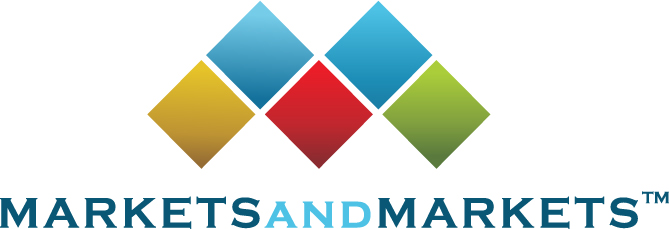
Delray Beach, FL, Sept. 25, 2025 (GLOBE NEWSWIRE) — According to a research report published by MarketsandMarkets, The global gelatin market size is experiencing notable expansion, estimated at USD 4.0 billion in 2024 and projected to reach USD 5.6 billion by 2029, growing at a CAGR of 6.9% from 2024 to 2029. This surge is fueled by rising consumer health consciousness, increasing demand for nutritive ingredients, and advancements in food technology that enable gelatin to be seamlessly integrated into a wide range of food and beverage applications.
Diverse Sources of Gelatin
Gelatin is primarily extracted from animal sources such as bovine and porcine skins and bones, as well as plant sources. Among these, the bovine segment is expected to maintain a significant share in the market due to its broad application in food, pharmaceuticals, and cosmetics. Notably, in August 2022, JBS S.A inaugurated a collagen and gelatin production facility from bovine skins with an investment of USD 77.45 million, producing up to 6,000 tonnes annually. This facility addresses the growing demand for health and wellness-oriented gelatin products.
Schedule a call with our Analysts to discuss your business needs
Pharmaceutical Applications Drive Growth
The pharmaceutical sector is emerging as the fastest-growing application segment for gelatin between 2024 and 2029. Gelatin is a key ingredient in hard and soft capsules, tablet coatings, granulation, surgical sponges, microencapsulation, and other drug delivery systems. Its biocompatibility, non-toxicity, and easy absorption make it ideal for medicinal and nutritional preparations, including blood plasma substitutes and hemostatic sponges used in surgeries.
To meet rising pharmaceutical demand, companies like PB Leiner (Belgium) have expanded their gelwoRx Dsolve portfolio with new products designed for fast dissolution and reduced crosslinking in soft capsules.
North America: A Major Market Player
North America, particularly the US, Canada, and Mexico, is expected to hold a substantial portion of the global gelatin market. Factors contributing to this growth include:
Increasing health awareness and aging populations
Robust pork and beef industries
Rising consumption of ready-to-eat and bakery products
The US alone has approximately 39,646 food and beverage processing facilities, highlighting the growing need for gelatin as a fortification and preservative agent. Additionally, gelatin plays a significant role in treating arthritis and supporting bone health—a critical factor given that over 78 million Americans are projected to suffer from arthritis by 2040.
The Gelatin Manufacturers Institute of America (GMIA) regulates gelatin production in North America, with members including global gelatin companies like Nitta Gelatin (Japan), Gelita (Germany), PB Leiner (Belgium), and Weishardt (France).
Key Players in the Gelatin Market
The gelatin market is highly competitive and global, with leading manufacturers including:
Darling Ingredients (US)
Tessenderlo Group (Belgium)
GELITA AG (Germany)
Nitta Gelatin Inc. (Japan)
Lapi Gelatine S.p.a. (Italy)
India Gelatine & Chemicals Ltd. (India)
Narmada Gelatines Limited (India)
Nippi Inc. (Japan)
Weishardt (France)
Trobas Gelatine B.V. (Netherlands)
Sterling Biotech Ltd (India)
Roxlor (US)
Suheung (South Korea)
Ewald-Gelatin GmbH (Germany)
Geltech Co., Ltd (Korea)
These companies are actively investing in production capacity and new product development to meet the growing demand across food, pharmaceutical, and personal care sectors. With innovations in extraction methods and formulation technologies, the gelatin market is poised for continued growth. Increasing awareness of health and wellness, coupled with demand for high-quality and multifunctional ingredients, is creating significant opportunities for manufacturers worldwide.
Request Custom Data to Address your Specific Business Needs
Frequently Asked Questions
Q1: What is driving the growth of the gelatin market?
A: The growth is driven by rising consumer health awareness, increasing demand for nutritive ingredients, and advancements in food technology that allow gelatin to be incorporated into a wide range of food, beverage, pharmaceutical, and cosmetic products.
Q2: What are the main sources of gelatin?
A: Gelatin is primarily derived from animal sources such as bovine and porcine skins and bones, as well as plant-based alternatives. Bovine gelatin holds a significant market share due to its wide applications.
Q3: Which application segment is growing the fastest?
A: The pharmaceutical segment is expected to grow the fastest due to gelatin’s use in capsules, tablet coatings, surgical sponges, microencapsulation, and other drug delivery systems. Its biocompatibility and non-toxicity make it ideal for medicinal and nutritional products.
Q4: Which regions dominate the gelatin market?
A: North America is a key region, led by the US, Canada, and Mexico. Factors like a strong food processing industry, aging population, and rising demand for health and wellness products contribute to the region’s substantial market share.
Q5: Who are the key players in the gelatin market?
A: Leading gelatin companies include Darling Ingredients (US), GELITA AG (Germany), Nitta Gelatin Inc. (Japan), PB Leiner (Belgium), Lapi Gelatine S.p.a. (Italy), Weishardt (France), and several others globally.
Q6: What are the main functions of gelatin in products?
A: Gelatin functions as a thickener, stabilizer, and gelling agent, making it a versatile ingredient in food, pharmaceuticals, cosmetics, and personal care products.
Q7: How is gelatin used in the pharmaceutical industry?
A: Gelatin is used in hard and soft capsules, tablet coatings, granulation, surgical sponges, and blood plasma substitutes. Its compatibility with human tissue and easy absorption make it ideal for these applications.
Q8: What is the projected market size for gelatin by 2029?
A: The global gelatin market is projected to reach USD 5.6 billion by 2029, growing at a CAGR of 6.9% from 2024.
Explore Adjacent Markets
Collagen & Gelatin Market
Guar Gum Market
Xanthan Gum Market
Marine Collagen Market



